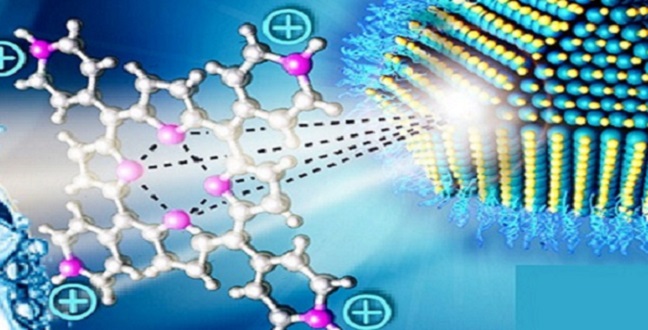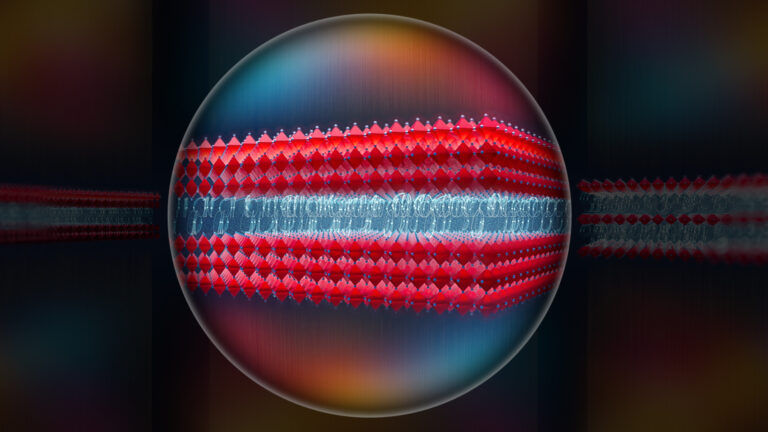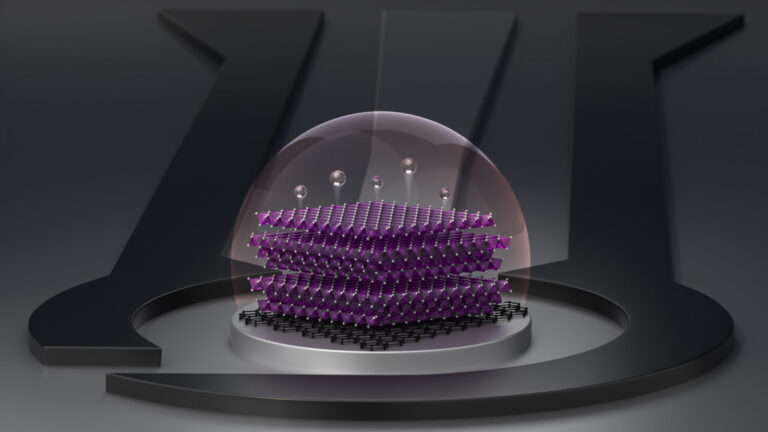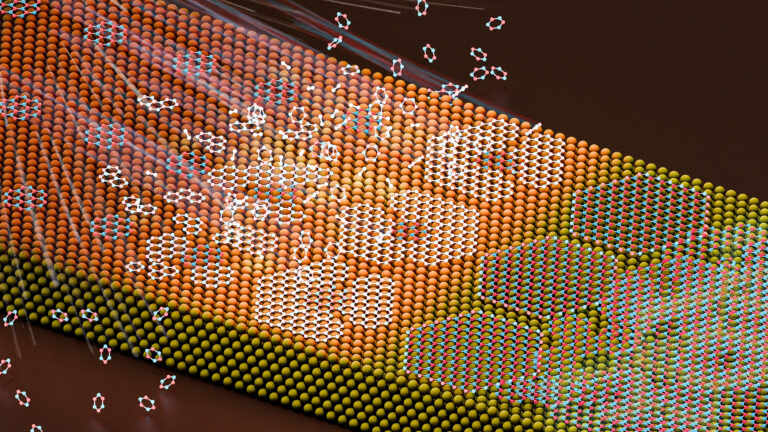Material Science and Engineering
Dots are part of the solution
Quantum dots improve the performance of cost-effective, solution-processed solar cells.


The triplet state lifetime varies with the distance and the strength of binding between the porphyrin and the surface of the quantum dot.
© 2015 KAUST
Nanotechnology could improve the efficiency of organic photovoltaic technology, researchers at King Abdullah University of Science and Technology (KAUST) have demonstrated1.
In general, solar cells made from organic materials offer a cheap, simple and sustainable approach to harvesting light from the sun. But there is an urgent need to improve the efficiency of these organic cells.
The performance of these devices is limited by the re-emission of light that has been absorbed, thus detracting energy that should be converted to electricity. When an organic material absorbs light, it can create an exciton — an electron paired to a positively charged equivalent called a hole. This exciton exists for a very short period before recombining radiatively or non-radiatively. So, for a useful current to be produced, the electron and hole must separate before they recombine.
Research by Omar Mohammed and his colleagues from the KAUST Solar and Photovoltaics Engineering Research Center show how the lifetime of excitons in an organic material can be extended by using quantum dots.
Quantum dots are nanometer scale particles. Their advantage in solar-cell technologies is their tunability: the optical properties, such as absorption wavelength, can be changed by varying the size of the dot. Additional molecules attached to the surface of the nanostructure can tailor the functionality of the dots even further.
Mohammed’s team investigated a family of organic compounds (commonly used in solar applications) known as porphyrins. The electron-hole pair generated in porphyrin by light absorption forms a high-energy exciton, which then relaxes to one of two different lower-energy excitons know as a singlet and a triplet.
“The photo-generated singlet excitons exhibit very short lifetimes and consequently they have short diffusion lengths, which is one of the greatest challenges for achieving high power-conversion efficiencies in solar-cell devices,” explains Mohammed. “Triplet excitons with their long lifetimes are an alternative way to overcome this problem.”
The researchers showed that cadmium telluride quantum dots can improve not only the path from excited exciton to triplet exciton — so-called intersystem crossing, but also the elongation of the triplet exciton lifetime. They were able to tune the intersystem crossing and the triplet state lifetime by changing the size of the quantum dots in the solution.
“We are currently testing other absorber materials and other semiconductor quantum dots,” says Mohammed. “In addition, we are planning to fabricate solar cell devices from these nano-assembles.”
References
- Ahmed, G. H., Aly, S. M., Usman, A., Eita, M. S., Melnikov, V. A. & Mohammed, O. F. Quantum confinement-tunable intersystem crossing and the triplet state lifetime of cationic porphyrin–CdTe quantum dot nano-assemblies. Chemical Communications 51, 8010—8013 (2015). | article
You might also like

Material Science and Engineering
Electron movie guides design of layered perovskite materials

Material Science and Engineering
Remote region sensor for essential vitamin deficiency

Material Science and Engineering
Low-power hydrogen sensor detects leaks in an instant

Material Science and Engineering
Illuminating pathways to long-lived organic solar cells

Chemistry
Beating the dark current for safer X-ray imaging

Chemical Engineering
Net benefits for advanced materials design

Material Science and Engineering
Atom-thin insulator grown into perfect films

Material Science and Engineering



